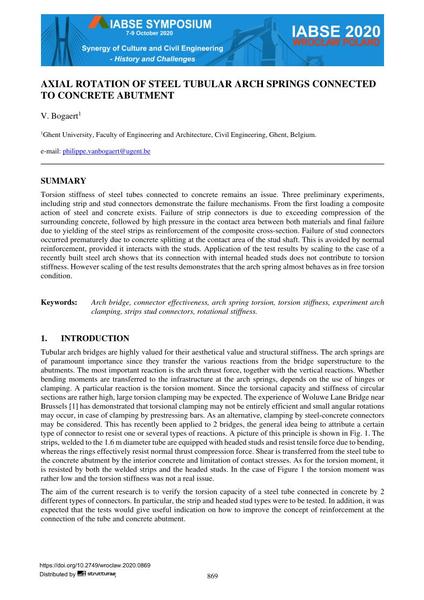Axial Rotation of Steel Tubular Arch Springs Connected to Concrete Abutment

|
|
|||||||||||
Bibliografische Angaben
| Autor(en): |
V. Bogaert
|
||||
|---|---|---|---|---|---|
| Medium: | Tagungsbeitrag | ||||
| Sprache(n): | Englisch | ||||
| Tagung: | IABSE Symposium: Synergy of Culture and Civil Engineering – History and Challenges, Wrocław, Poland, 7-9 October 2020 | ||||
| Veröffentlicht in: | IABSE Symposium Wroclaw 2020 | ||||
|
|||||
| Seite(n): | 869-876 | ||||
| Anzahl der Seiten (im PDF): | 8 | ||||
| Jahr: | 2020 | ||||
| DOI: | 10.2749/wroclaw.2020.0869 | ||||
| Abstrakt: |
Torsion stiffness of steel tubes connected to concrete remains an issue. Three preliminary experiments, including strip and stud connectors demonstrate the failure mechanisms. From the first loading a composite action of steel and concrete exists. Failure of strip connectors is due to exceeding compression of the surrounding concrete, followed by high pressure in the contact area between both materials and final failure due to yielding of the steel strips as reinforcement of the composite cross-section. Failure of stud connectors occurred prematurely due to concrete splitting at the contact area of the stud shaft. This is avoided by normal reinforcement, provided it interacts with the studs. Application of the test results by scaling to the case of a recently built steel arch shows that its connection with internal headed studs does not contribute to torsion stiffness. However scaling of the test results demonstrates that the arch spring almost behaves as in free torsion condition. |
||||
| Stichwörter: |
Bogenbrücke
|
||||
